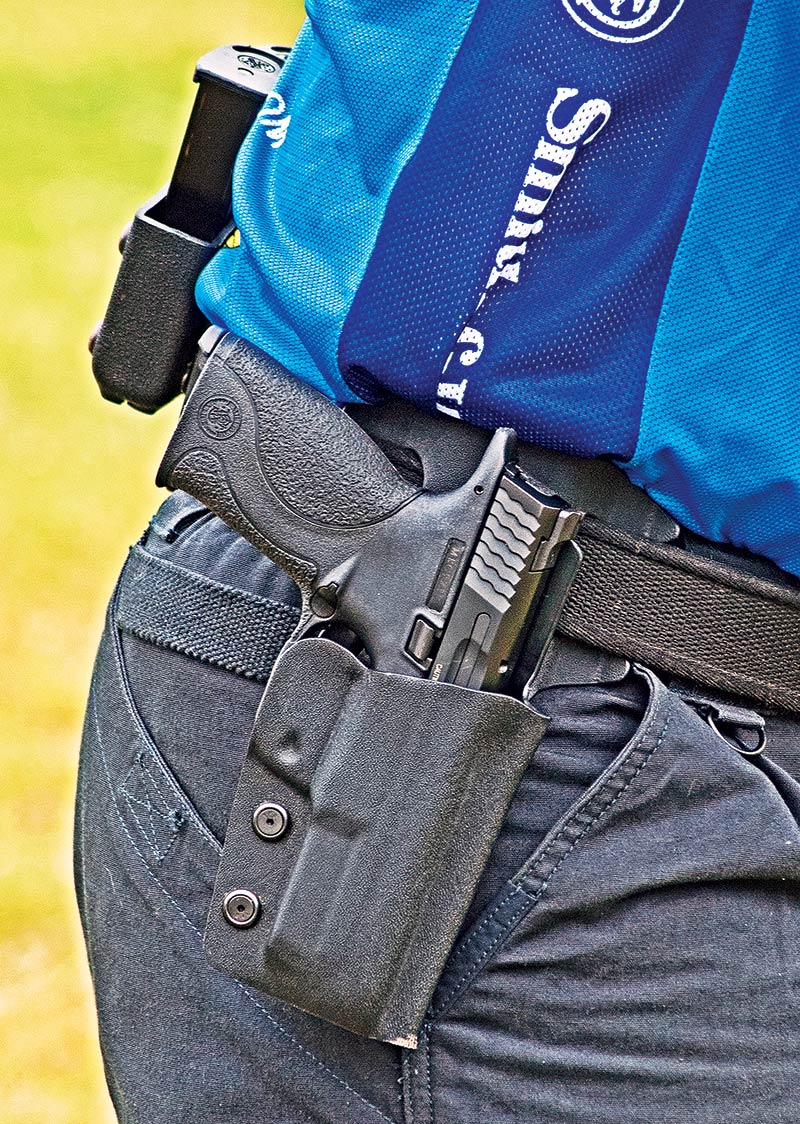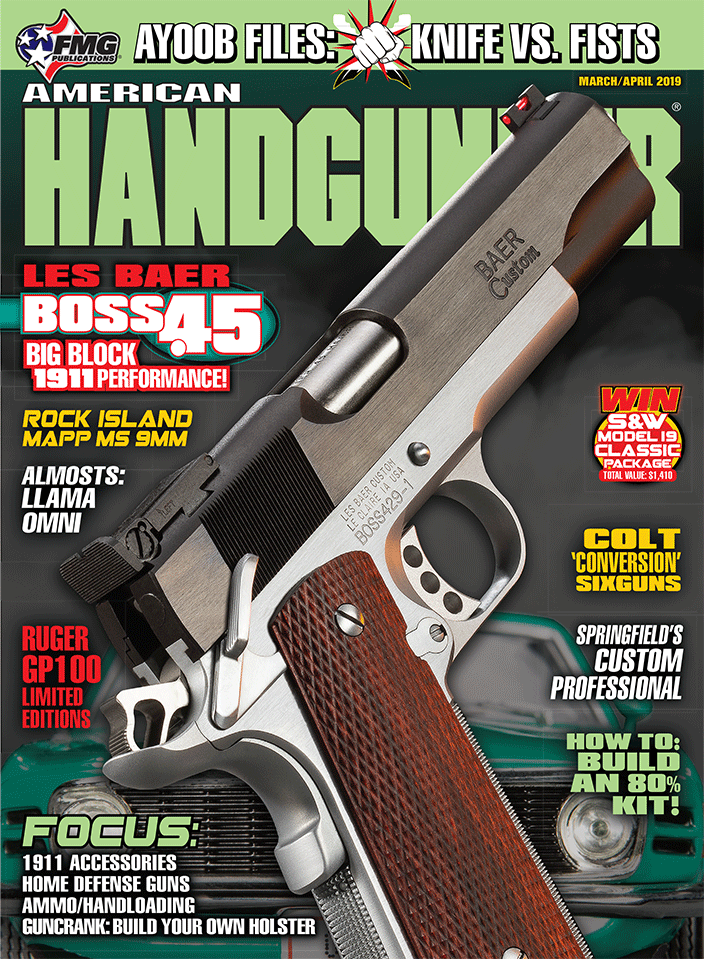Can You Afford To Compete?
Can You Afford Not To?
Equipment for practical shooting competition need not be expensive. There are several divisions for handguns, with Production being among the most popular. If you own a handgun for home and personal defense there’s a pretty good chance you already have a pistol suitable for Production. Add a few spare magazines, a belt holster and magazine carriers (synthetics are generally inexpensive, durable, and functional), and of course eye and ear protection, and go forth and win a national or world title.
It wasn’t always this way. Veteran competitors who were around in early years may recall a time all handguns competed together. IPSC rules are prefaced by a list of eight “Principles of Practical Shooting” which all member nations agree to accept. This was Principle #3 as originally written: “Firearm types are not separated, all compete together without handicap.”
From the founding of IPSC and through the 1980s, practical pistol competition was dominated by the 1911 .45 ACP pistol. A few skeptics believed the founders of the sport were already certain the 1911 was the finest defensive pistol ever made and cleverly manipulated the rules so as to “prove” these preconceived notions.
Such cynicism! Although it’s true the trend to high round count, multiple target stages and the need for multiple reloads quickly eliminated revolvers from serious competition. The momentum-based “power factor” gave the .45 ACP a huge scoring advantage over “minor” cartridges such as 9mm and .38 Special.
Any advantage the few high-capacity handguns then available, mainly the Browning Hi-Power, S&W 59, or (rarely) the CZ-75, might have been negated by mandatory reloads. If you’re thinking mandatory reloads is not exactly in the spirit of freestyle competition, you’re right.
Skewed Rules?
Irecall reading an edict along the lines of “Mandatory reloads cannot be used to restrict firepower.” Well, good. Clear and principled, except it was immediately followed by “However mandatory reloads can be included to test reloading speed, which is an important practical shooting skill.” A hardened politician could have done no better.
Speaking of politicians, one strongman type was supposed to have said, “Democracy is a train we ride until we get to the station we want, then we get off.” You could say the same about freestyle competition. As long as it led to the dominance of the single-stack 1911 .45 ACP it was a wonderful thing. Trouble is, although some got off at the station, the train kept on going.
As the 1980s ran into the 1990s the innovations just kept coming. Long slides, heavy barrels, compensators, .38 Super major, multi-chamber compensators, high capacity 1911-compatible frames, optical sights and more stormed in. As one who lived through it I can attest it was an exciting time, but also frustrating — and expensive! It became evident the equipment race was costing the sport current members, and discouraging new shooters.
Well, there’s no need to re-fight old battles. Debates were long and bitter, with some long-term and even founding members of IPSC splitting off to form the International Defensive Pistol Association (IDPA). It’s no light thing to abandon what was once a basic principle, but the alternative was to see the sport stagnate.
Big Changes
The first step was Limited division, disallowing compensators and optical sights but allowing many other modifications, making the guns almost as expensive as full-house Open guns. USPSA currently recognizes seven handgun divisions (plus pistol-caliber carbine). I think the organization deserves tremendous credit for developing the divisions, and the infrastructure to manage what has become a complicated administrative challenge.
The current handgun divisions are Production, Revolver, Single Stack, Limited-10, Limited, Open and most recently, Carry Optics. Full details of each division would take far more space than I have here and in any case are subject to change. The most current regulations are available from the USPSA web site.
Production division is the easiest and least expensive way to give practical shooting competition a try, and it has become very popular. Recent rule changes allow a wider range of parts replacement but most are simply matters of personal preference.
I like playing with equipment and making modifications as much as anyone, but I think getting hung up on minor equipment changes is a waste of time. For a new shooter starting out, and for some considerable time after, the component most in need of modification is the shooter. There’s no substitute for trigger time, both dry fire and at the range.







